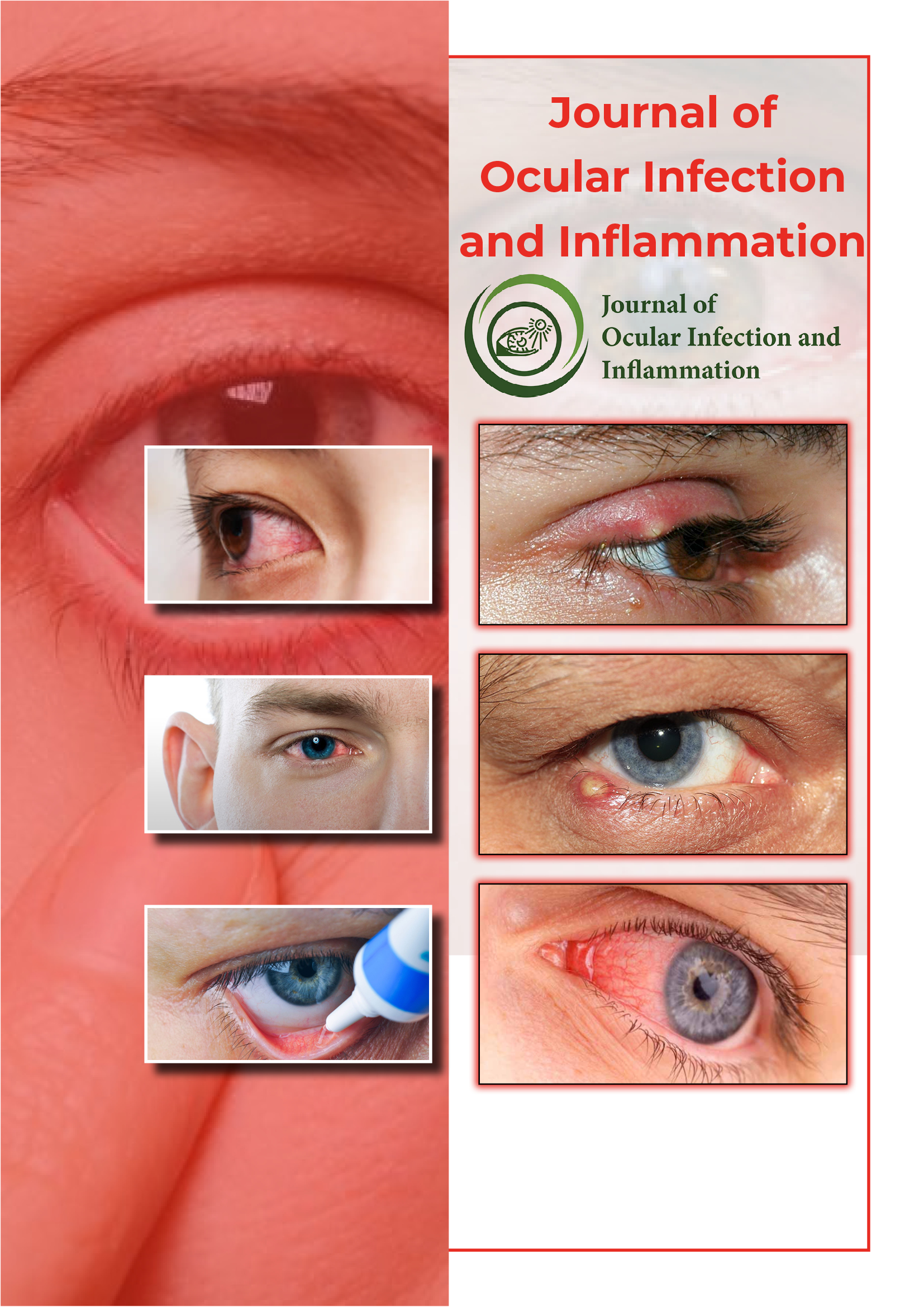Useful Links
Share This Page
Journal Flyer

Open Access Journals
- Agri and Aquaculture
- Biochemistry
- Bioinformatics & Systems Biology
- Business & Management
- Chemistry
- Clinical Sciences
- Engineering
- Food & Nutrition
- General Science
- Genetics & Molecular Biology
- Immunology & Microbiology
- Medical Sciences
- Neuroscience & Psychology
- Nursing & Health Care
- Pharmaceutical Sciences
Brief Commentary - (2025) Volume 6, Issue 1
Comparative Evaluation of Topical Versus Intravitreal Antibiotics in Acute Endophthalmitis Management
Melissa Rautenberg*Received: 26-Feb-2025, Manuscript No. .JOII-25-29239; Editor assigned: 28-Feb-2025, Pre QC No. .JOII-25-29239 (PQ); Reviewed: 14-Mar-2025, QC No. .JOII-25-29239; Revised: 21-Mar-2025, Manuscript No. .JOII-25-29239 (R); Published: 28-Mar-2025, DOI: 10.35248/JOII.25.06.129
Description
Acute Endophthalmitis remains one of the most feared complications following intraocular surgeries, particularly cataract extraction and intravitreal injections. Despite advances in aseptic techniques and prophylactic regimens, the incidence of this sight-threatening infection has not been entirely eliminated. The cornerstone of successful management relies on early diagnosis, rapid intervention and appropriate antibiotic therapy. The controversy persists regarding the superiority of topical versus intravitreal antibiotic approaches. This study explores the efficacy of each method and identifies factors that may influence outcomes in affected patients.
A retrospective analysis was conducted involving 103 patients diagnosed with acute postoperative Endophthalmitis over a span of five years. The patients were divided into two cohorts based on the primary mode of treatment received: 48 patients were managed with intensive topical antibiotic therapy, while 55 received direct intravitreal antibiotic injections. The demographic profile, visual outcomes, microbiological cultures and time-to-treatment intervals were analyzed to compare the therapeutic effectiveness of the two modalities.
Visual acuity improvements were recorded over a six-week follow-up period. In the intravitreal group, 64% of patients demonstrated at least a three-line gain on the Snellen chart, compared to 37% in the topical group. Culture positivity was notably higher in the intravitreal cohort, possibly due to the direct sampling of vitreous aspirate, suggesting a more targeted treatment approach. In both groups, coagulase-negative Staphylococcus and Streptococcus viridians were the most common isolates, underscoring their continued prevalence in postoperative infections.
An important determinant of success was the timing of the first intervention. Patients who received intravitreal injections within 24 hours of symptom onset had the most favorable outcomes. In contrast, delays beyond 48 hours, regardless of the treatment modality, were associated with permanent structural damage, including retinal necrosis and phthisis bulbi. Notably, the topical-only group demonstrated a higher need for secondary interventions, such as pars plane vitrectomy, due to unresponsive infection progression.
Interestingly, in the subgroup analysis of patients allergic to common antibiotics or presenting with compromised systemic status, topical therapy with fortified antibiotics offered a safer alternative without significant systemic risk. However, this was offset by slower response and higher recurrence rates. The study also highlighted the importance of patient compliance in the topical therapy group, where frequent dosing schedules were often difficult to maintain, leading to suboptimal intraocular concentrations.
While both modalities have roles in specific clinical contexts, the data strongly supports the use of intravitreal antibiotics as the primary treatment for acute bacterial Endophthalmitis. Their ability to achieve therapeutic drug levels directly at the site of infection offers a essential advantage. Nevertheless, topical therapy may serve as an adjunct or alternative in select cases, especially when invasive procedures are contraindicated or refused by the patient.
Further prospective studies are warranted to explore the pharmacokinetics of newer-generation antibiotics administered topically and their potential to penetrate intraocular tissues effectively. The emergence of drug-resistant organisms also necessitates continuous surveillance and updates in empirical treatment protocols. Additionally, enhancing surgical asepsis and patient education remain pivotal in preventing such infections.
The treatment of acute Endophthalmitis requires a tailored approach depending on patient condition, causative organism and available resources. While intravitreal antibiotics demonstrate superior outcomes, topical antibiotics remain a viable adjunct, particularly in the initial management or in specific contraindicated scenarios. Prompt diagnosis and timely intervention remain the most critical factors in preserving vision and ocular integrity in these patients.
Citation: Rautenberg M (2025) Comparative Evaluation of Topical Versus Intravitreal Antibiotics in Acute Endophthalmitis Management. J Ocul Infec Inflamm.06:129.
Copyright: © 2025 Rautenberg M. This is an open-access article distributed under the terms of the Creative Commons Attribution License, which permits unrestricted use, distribution and reproduction in any medium, provided the original author and source are credited

